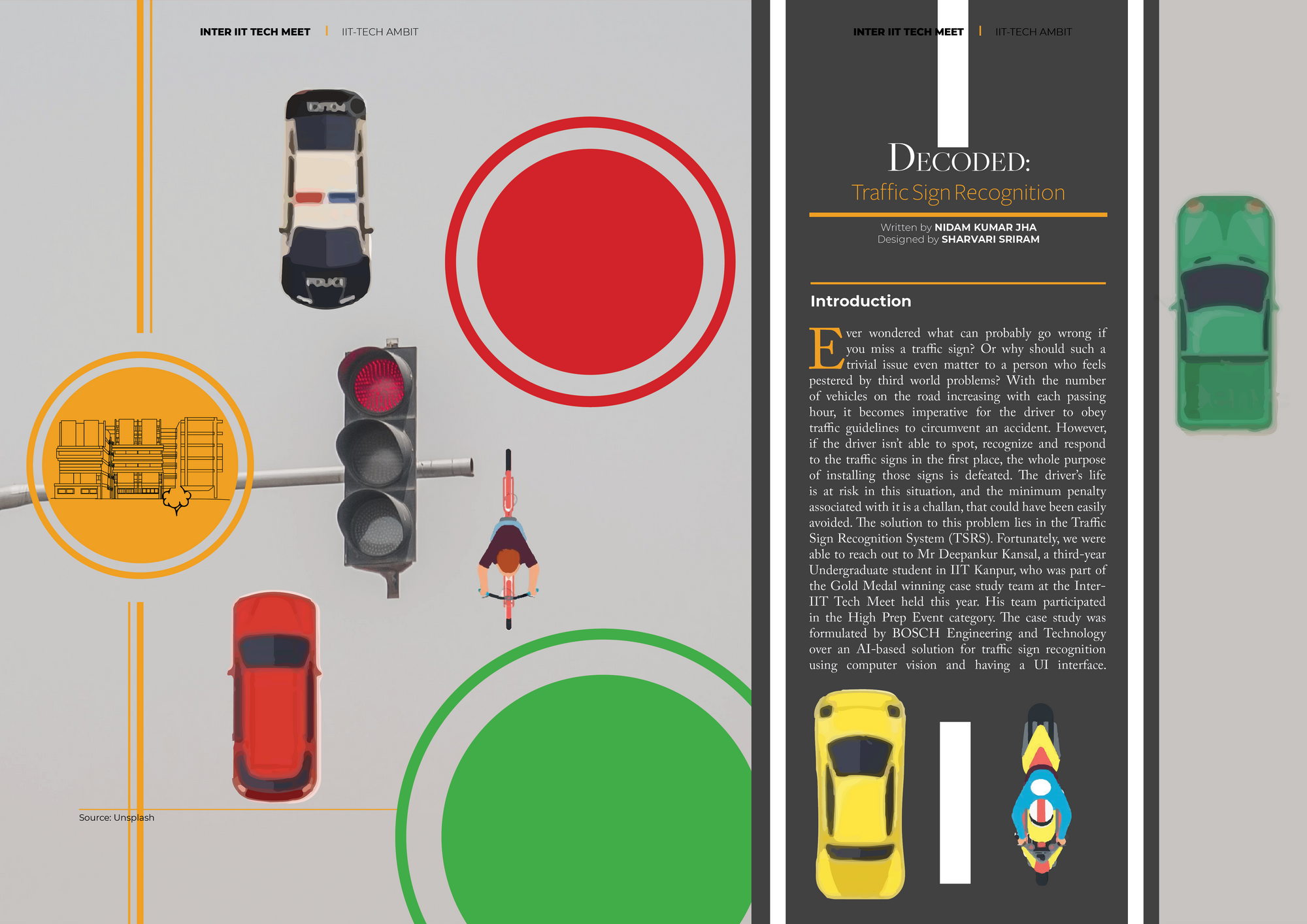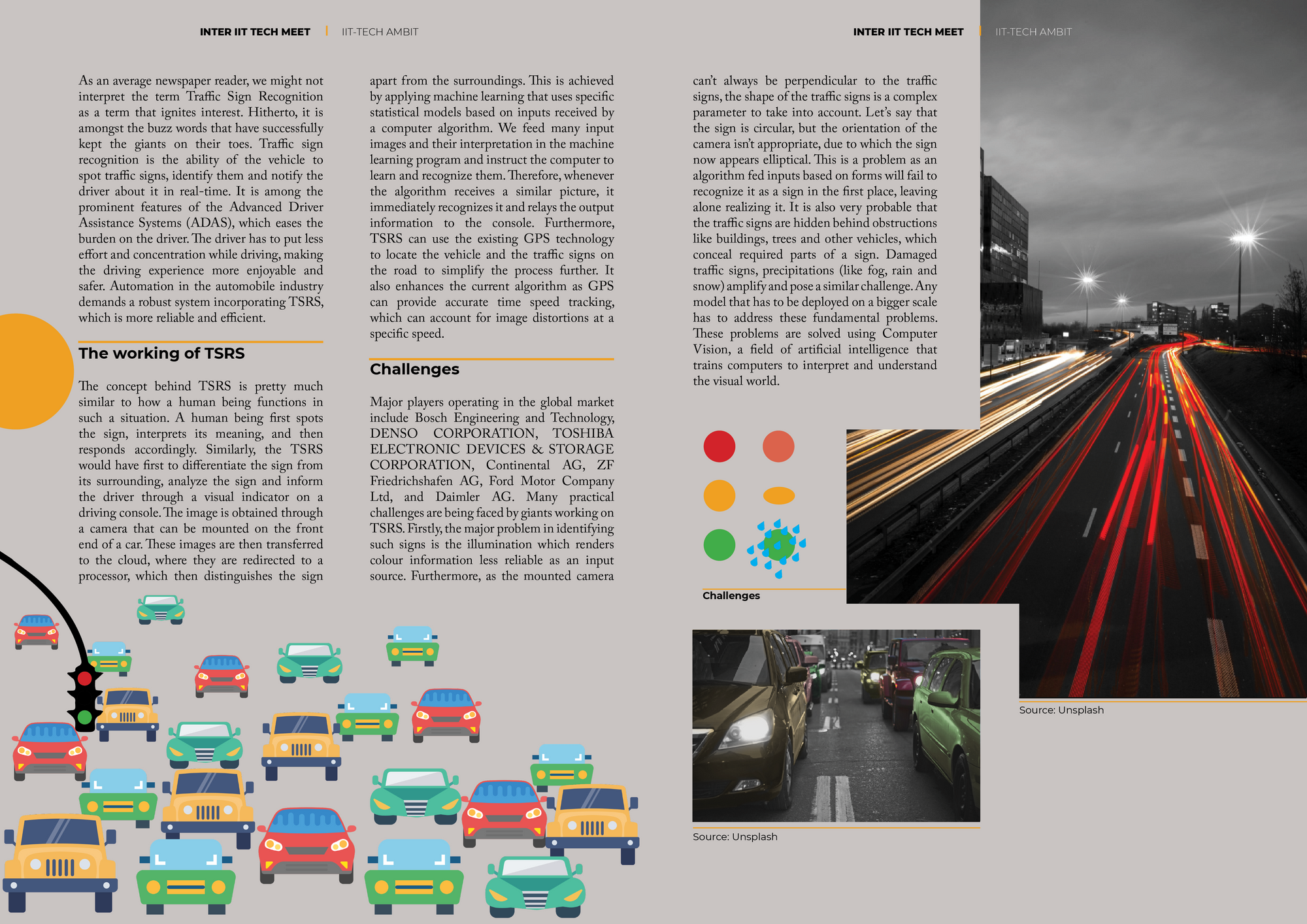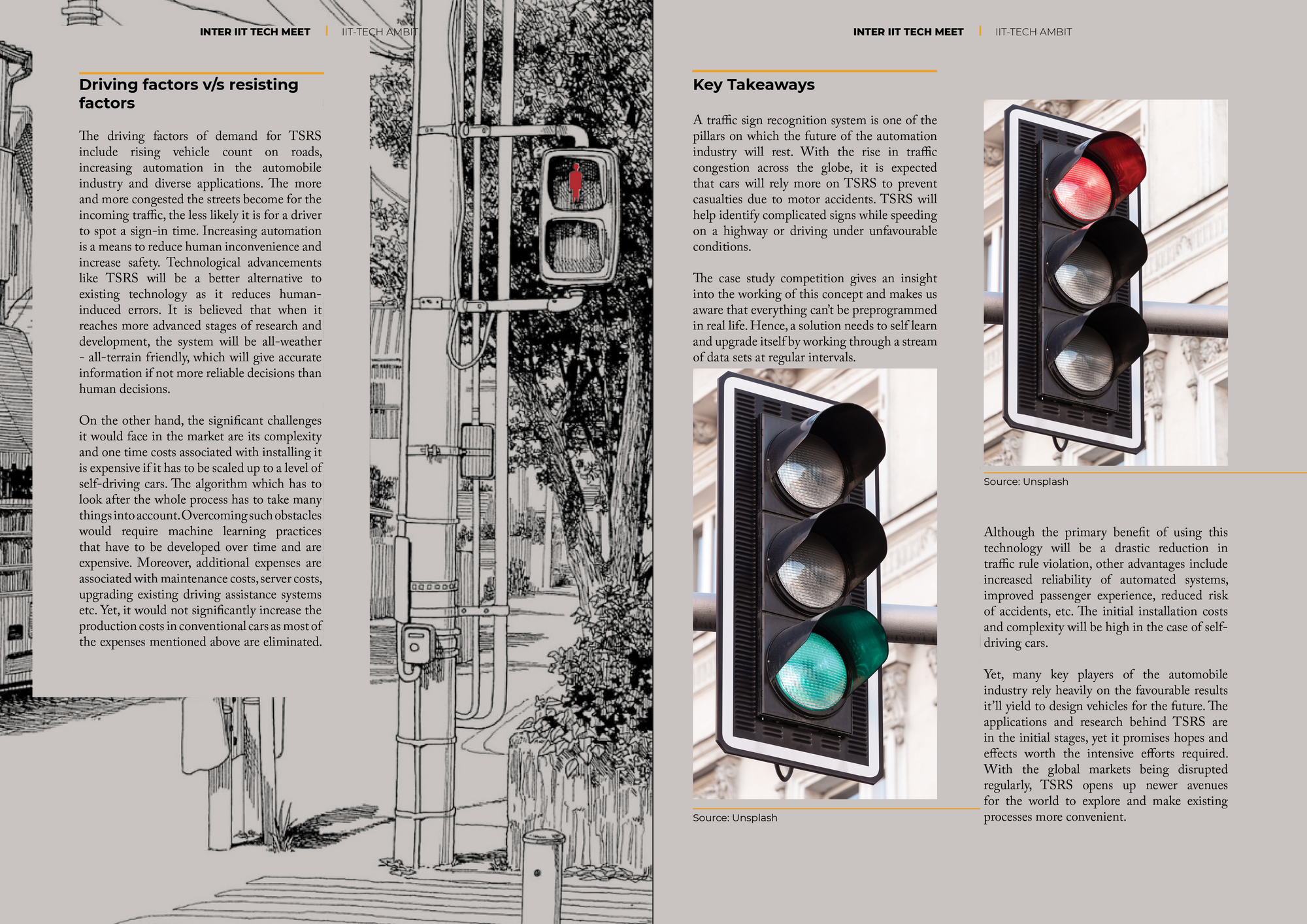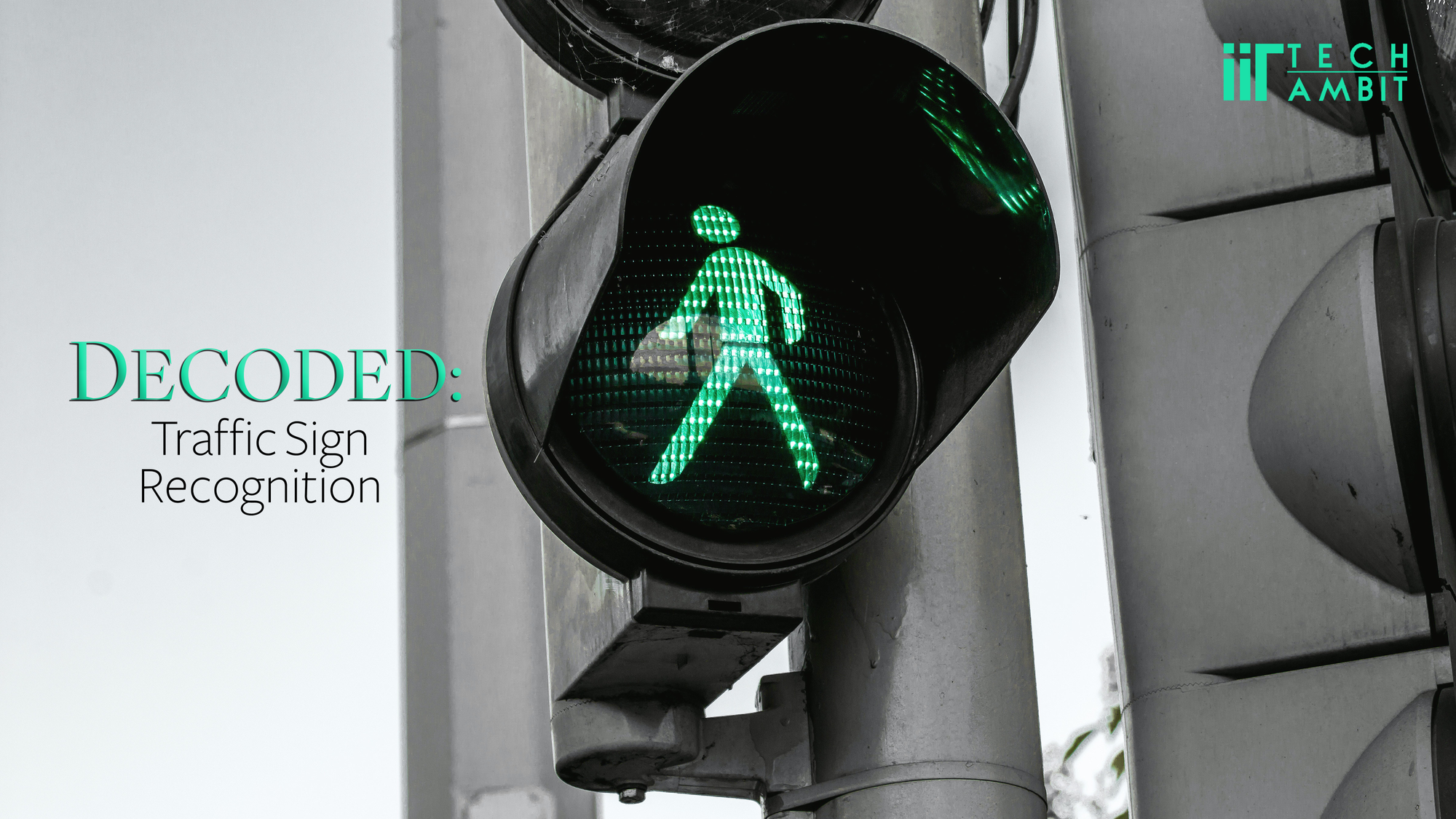Introduction
Ever wondered what can probably go wrong if you miss a traffic sign? Or why should such a trivial issue even matter to a person who feels pestered is pestered by third world problems? With the number of vehicles on the road increasing with each passing hour, it becomes imperative for the driver to obey traffic guidelines to circumvent an accident. However, if the driver isn't able to spot, recognize and respond to the traffic signs in the first place, the whole purpose of installing those signs is defeated. The driver's life is at risk in this situation, and the minimum penalty associated with it is a challan, that could have easily avoided. The solution to this problem lies in the Traffic Sign Recognition System (TSRS). Fortunately, we were able to reach out to Mr Deepankur Kansal, a third-year Undergraduate student in IIT Kanpur, who was part of the Gold Medal winning case study team at the Inter-IIT Tech Meet held this year. His team participated in the High Prep Event category. The case study was formulated by BOSCH Engineering and Technology over an AI-based solution for traffic sign recognition using computer vision and having a UI interface.

As an average newspaper reader, we might not interpret the term Traffic Sign Recognition as a term that ignites interest. Hitherto, it is amongst the buzz words that have successfully kept the giants on their toes. Traffic sign recognition is the ability of the vehicle to spot traffic signs, identify them and notify the driver about it in real-time. It is among the prominent features of the Advanced Driver Assistance Systems (ADAS), which eases the burden on the driver. The driver has to put less effort and concentration while driving, making the driving experience more enjoyable and safer. Automation in the automobile industry demands a robust system incorporating TSRS, which is more reliable and efficient.
The working of TSRS
It was not less than a rollercoaster ride for the team to work with increased academic burden and the communication challenges associated with an online semester. Deepankur says that the team had to work hard to provide a unique and out of the box solution while adhering to the time and monetary constraints of firms in a corporate setup. The concept behind TSRS is pretty much similar to how a human being functions in such a situation. A human being first spots the sign, interprets its meaning, and then responds accordingly. Similarly, the TSRS would have first to differentiate the sign from its surrounding, analyze the sign and inform the driver through a visual indicator on a driving console. The team had to deliver a deployable demo; therefore, it was subdivided into two units that worked on two crucial aspects of the case study: Computer Vision and Web Development. The model relies on applying incremental pipelines, which essentially are a set of predefined automated processes which helps developers reliably and efficiently compile and deploy their code to their production compute platforms. It allows greater freedom to add newer datasets, self-learning from it at each step of the process. The camera obtains images and mounts them on the front end of a car. These images are transferred to the cloud, where they are redirected to a processor, which then distinguishes the sign apart from the surroundings. This is achieved by applying machine learning that uses specific statistical models based on inputs received by a computer algorithm. We feed many input images and their interpretation in the machine learning program and instruct the computer to learn and recognize them. Therefore, whenever the algorithm receives a similar picture, it immediately recognizes it and relays the output information to the console. Furthermore, TSRS can use the existing GPS technology to locate the vehicle and the traffic signs on the road to simplify the process by introducing datasets for the machine learning algorithm. It also enhances the current algorithm as GPS can provide accurate time speed tracking, which can account for image distortions at a specific speed.
Challenges
Major players operating in the global market include Bosch Engineering and Technology, DENSO CORPORATION, TOSHIBA ELECTRONIC DEVICES & STORAGE CORPORATION, Continental AG, ZF Friedrichshafen AG, Ford Motor Company Ltd, and Daimler AG. Many practical challenges are being faced by giants working on TSRS. Firstly, the major problem in identifying such signs is the illumination which renders colour information less reliable as an input source. Furthermore, as the mounted camera can't always be perpendicular to the traffic signs, the shape of the traffic signs is a complex parameter to take into account. Let's say that the sign is circular, but the orientation of the camera isn't appropriate, due to which the sign now appears elliptical. This is a problem as an algorithm fed inputs based on forms will fail to recognize it as a sign in the first place, leaving alone realizing it. It is also very probable that the traffic signs are hidden behind obstructions like buildings, trees and other vehicles, which conceal required parts of a sign. Damaged traffic signs, precipitations (like fog, rain and snow) amplify and pose a similar challenge. Any model that has to be deployed on a bigger scale has to address these fundamental problems. These problems are solved using Computer Vision, a field of artificial intelligence that trains computers to interpret and understand the visual world.

Driving factors v/s resisting factors
The driving factors of demand for TSRS include rising vehicle count on roads, increasing automation in the automobile industry and diverse applications. The more and more congested the streets become for the incoming traffic, the less likely it is for a driver to spot a sign-in time. Increasing automation is a means to reduce human inconvenience and increase safety. Technological advancements like TSRS will be a better alternative to existing technology as it reduces human-induced errors. It is believed that when it reaches more advanced stages of research and development, the system will be all-weather - all-terrain friendly, which will give accurate information if not more reliable decisions than human decisions.
On the other hand, the significant challenges it would face in the market are its complexity and one time costs associated with installing it is expensive if it has to be scaled up to a level of self-driving cars. The algorithm which has to look after the whole process has to take many things into account. Overcoming such obstacles would require machine learning practices that have to be developed over time and are expensive. Moreover, additional expenses are associated with maintenance costs, server costs, upgrading existing driving assistance systems etc. Yet, it would not significantly increase the production costs in conventional cars as most of the expenses mentioned above are eliminated.
Key Takeaways
A traffic sign recognition system is one of the pillars on which the future of the automation industry will rest. With the rise in traffic congestion across the globe, it is expected that cars will rely more on TSRS to prevent casualties due to motor accidents. TSRS will help identify complicated signs while speeding on a highway or driving under unfavourable conditions. The case study competition gives an insight into the working of this concept and makes us aware that everything can't be preprogrammed in real life. Hence, a solution needs to self learn and upgrade itself by working through a stream of data sets at regular intervals. Although the primary benefit of using this technology will be a drastic reduction in traffic rule violation, other advantages include increased reliability of automated systems, improved passenger experience, reduced risk of accidents, etc. The initial installation costs and complexity will be high in the case of self-driving cars. Yet, many key players of the automobile industry rely heavily on the favourable results it'll yield to design vehicles for the future. The applications and research behind TSRS are in the initial stages, yet it promises hopes and effects worth the intensive efforts required. With the global markets being disrupted regularly, TSRS opens up newer avenues for the world to explore and make existing processes more convenient.


